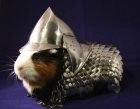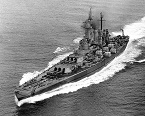jazman
Posts: 369
Joined: 1/20/2007
From: Crush Depth
Status: offline

|
Here's a good read on the armoured vs. the non-armoured flight deck:
http://www.navweaps.com/index_tech/tech-030.htm
quote:
In fact, the British designs failed. Off Okinawa, the resistance of the British carriers seemed impressive but in reality the damage they took was severe. Having the hangar inside the hull girder made the hull structure weak and the ships were deformed by comparatively minor damage. Note how quickly nearly all the armored carriers were scrapped postwar - surveys showed they had irreparable hull damage. In contrast, the Essex's, which suffered much more severe damage, lasted for decades.
The severe damage suffered by the British armored carriers is documented by their post-war surveys. These surveys were carried out to determine the suitability of the ships for modernization.
Of the British armored carriers, Formidable and Illustrious were write-offs due to war damage. By the end of the war, Illustrious was in very poor condition; her centerline shaft was history due to structural deformation and her machinery was shot. Formidable had raped herself when a Firefly (sic – aircraft that caused the damage was actually a Corsair) rolled off a lift and raked the hangar with 20 mm gunfire. This started a very bad fire which was contained within the hangar and acted like a furnace. The heat deformed the hull and that was it.
_____________________________
BS, MS, PhD, WitP:AE, WitE, WitW
|
 Printable Version
Printable Version









 How many aircraft could they hold when they got the Wildcats, Hellcats and Corsairs?
How many aircraft could they hold when they got the Wildcats, Hellcats and Corsairs? 


 There are 23 planes deemed operational, but there are actually 9 additional Martlets which are being maintained from what I can see :) The total is 32, that still isn't much, I give you that.
There are 23 planes deemed operational, but there are actually 9 additional Martlets which are being maintained from what I can see :) The total is 32, that still isn't much, I give you that.














 New Messages
New Messages No New Messages
No New Messages Hot Topic w/ New Messages
Hot Topic w/ New Messages Hot Topic w/o New Messages
Hot Topic w/o New Messages Locked w/ New Messages
Locked w/ New Messages Locked w/o New Messages
Locked w/o New Messages Post New Thread
Post New Thread